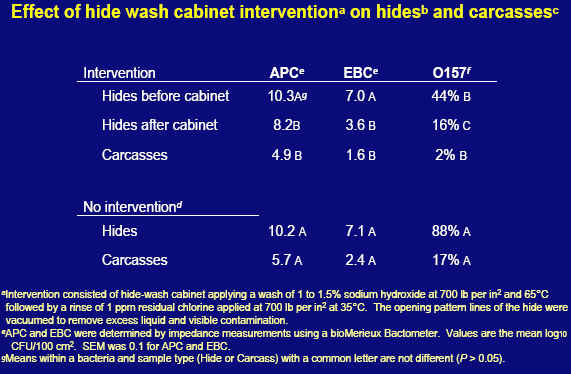



Meeting Consumers' Food Safety Expectations
Consumers expect convenience and quality when they are buying food and particularly meat and that quality means safety and good eating quality, writes TheCattleSite Senior Editor, Chris Harris.
According to Dr Mohammed Koomaraie, CEO, Meat Division of IEH Laboratory and Consulting Group in Seattle, consumers now consider food safety to be something that cannot be compromised.
"They expect safety and although consumers have their own responsibility as well and they have to ensure safety, the industry has to do its best as well," Dr Koomaraie told the World Meat Congress in Cape Town.
As part of the measures to ensure food safety, he said that the industry has to understand the different pathogens and how they have contaminated the food.
Taking the example of E.coli 0157, which had caused major concerns in the US following a serious outbreak of poisoning traced back to a Jack in the Box restaurant in 1993, he said that it is essential to:
- Know the source of E. coli O157 and other pathogens.
- Know how E. coli O157 and other pathogens get onto the carcase and find their way into ground beef/lamb.
- Know how to interfere with the transfer of E. coli O157 and other pathogens onto the carcase.
He said that the pathogen is found in chicken, sheep, pigs, deer and goats, but main reservoir has been cattle.
"Although other foods have been implicated in O157 outbreaks, the majority of the cases have been linked to consumption of undercooked ground beef," he said.
It is now clearly established that hide of cattle, the pelt of lamb and the skin of hogs is the source of pathogen contamination.
During the hide/pelt/skin removal process a proportion of the pathogens is transferred onto the carcase. If not removed, these pathogens eventually find their way into the final product.
Dr Koomaraie demonstrated that through sampling the hides and carcases the degree of contamination could be established. He also showed that by proper intervention the contamination could be reduced considerably.
He said that improved dressing practices had to be used to ensure the reduction and removal of contamination and while best practice was essential, other means of intervention to reduce the contamination also had to be used. In the US plants wash the cattle carcases, with a variety of anti-0157 agents, before or after bleeding.

He showed how without intervention and through bad practice the contamination on the hides transferred easily to the carcase, but with intervention and better hide removal E.coli contamination levels could be reduced to the minimum so that by the time the carcase had been processed. In one example, the contamination in ground beef had been reduced by cabinet washing from 0.55 per cent to 0.08 per cent.
He said that the bottom line was that consumers have every right to expect their food to be safe.
To maintain consumer confidence, it is in the best interest of the industry to do its absolute best to ensure meat is free of harmful agents and even this may not be enough.
He added that the industry must also communicate its food safety programmes to the consumers.
"In my assessment, the decreased consumer confidence in the food supply is responsible for the increased desire by consumers to buy locally," said Dr Koomaraie.
"Industry needs to reverse the trend in the popularity of local foods and safety is a one of main demand drivers.
"Industry at some point needs to decide that it will take the food safety lead and not just wait for governments to issue regulations to follow.
"This recipe has not worked in the past and it is highly unlikely that it will ever work."
September 2008


